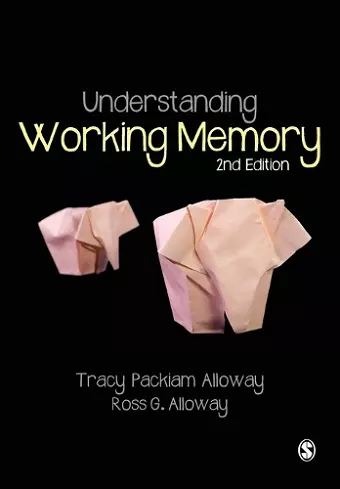Understanding Working Memory
Tracy Packiam Alloway author Ross G Alloway author
Format:Paperback
Publisher:Sage Publications Ltd
Published:10th Nov '14
Should be back in stock very soon
This paperback is available in another edition too:
- Hardback£108.00(9781446274200)

It is hard to conceive of a classroom activity that does not involve working memory – our ability to work with information. In fact, it would be impossible for students to learn without working memory. From following instructions to reading a sentence, from sounding out an unfamiliar word to calculating a math problem, nearly everything a student does in the classroom requires working with information. Even when a student is asked to do something simple, like take out their science book and open it to page 289, they have to use their working memory.
Most children have a working memory that is strong enough to quickly find the book and open to the correct page, but some don’t – approximately 10% in any classroom. A student who loses focus and often daydreams may fall in this 10%. A student who isn’t living up to their potential may fall in this 10%. A student who may seem unmotivated may fall in this 10%. In the past, many of these students would have languished at the bottom of the class, because their problems seemed insurmountable and a standard remedy like extra tuition didn’t solve them. But emerging evidence shows that many of these children can improve their performance by focusing on their working memory. Working memory is a foundational skill in the classroom and when properly supported it can often turn around a struggling student’s prospects.
This book will make sure you are able to spot problems early, work with children to improve their working memory and ensure they reach their full potential.
How does the book work?
Each of the following chapters includes a description of the learning difficulty (WHAT), followed by an inside look into the brain of a student with the disorder (WHERE), their unique working memory profile (WHY), and classroom strategies to support working memory (HOW). There are two types of strategies: general working memory strategies that can be applied to all students in your class, and specific working memory strategies for each learning difficulty. The final chapter (Chapter 9) provides the student with tools to empower them along their learning journey.
The aim in...
This is a clearly written and well-organised book, providing valuable information about working memory and how it can affect individuals’ learning and progress in an educational context. It is a ‘must read’ for all teachers and support assistants in primary and secondary schools. Many parents are likely to find the book of interest to them if they have a child with any of the disorders discussed in the book. Undergraduate psychology students would also benefit from reading this book as background understanding to working memory in context – the references and further reading offering opportunity to extend their knowledge. -- Jenny Moody, Postgraduate Psychology Tutor, Dyslexia Action
The clear structure and lack of jargon make the book accessible to a wide range of readers... I was especially impressed that anxiety disorders were included because these can have a debilitating effect on a student, and yet they are often missed out of books on special needs. The case studies are helpful and provide examples of how students can be affected, together with specific strategies that can be used to help them. -- Amanda Swannell
It is a very handy, "go to" reference for students, teachers and parents about the nature of working memory difficulties and how these can manifest themselves within the areas of Dyslexia, Dyscalculia, DCD, ADHD, ASD and Anxiety disorders. -- Janet Oostendorp
The book is a refreshing welcome addition to the field of special education, and promises to be a great success among educators.
-- Naveen Kashyap, Department of Humanities and Social Sciences, Indian Institute of TechnologyISBN: 9781446274217
Dimensions: unknown
Weight: 300g
168 pages
2nd Revised edition